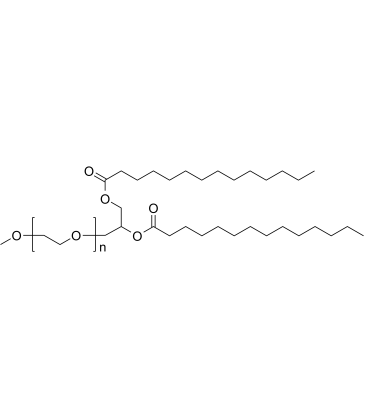160743-62-4
| Name | DMG-PEG 2000 |
|---|
| Description | DMG-PEG 2000 is used for the preparation of liposome for siRNA delivery with improved transfection efficiency in vitro. DMG-PEG 2000 is also used for the lipid nanoparticle for an oral plasmid DNA delivery approach in vivo through a facile surface modification to improve the mucus permeability and delivery efficiency of the nanoparticles[1]. |
|---|---|
| Related Catalog | |
| In Vitro | NP-3 (0.05-1.6 mg/mL; 24 hours) does not decrease the cytotoxicity of cells in 293T, HepG2, A549, and HeLa cell lines, but the DPPC and DMG-PEG coated nanoparticles reduce cell cytotoxicity. In addition, the transfection efficiency of DPPC/DMG-PEG/(lPEI/DNA) nanoparticles (NP-3) in 293 cells is improved, and the maximum transfection efficiency (∼76% eGFP positive cells) is observed[1]. |
| In Vivo | NP-3 (oral administration; 150 μg DNA per mouse; single dose) at 12, 24, and 36 h postadministration, luciferin substrate is intraperitoneally injected to verify its permeability. NP-3 group maintains high luciferase expression in the liver, lung, and intestine areas 12-24 h post-treatment.Additionally, NP-3 exhibits 1.5 times higher signal intensity than that of NP-1 or NP-2 group from 12 to 24 h postoral administration[2]. |
| References |
| Molecular Formula | (C2H4O)nC32H62O5 |
|---|---|
| Molecular Weight | 2509.2 |
